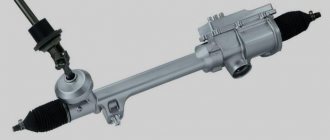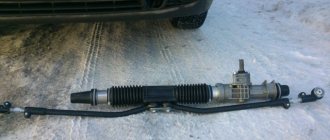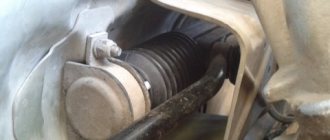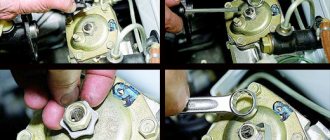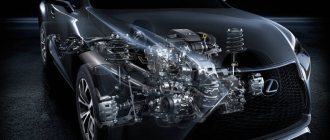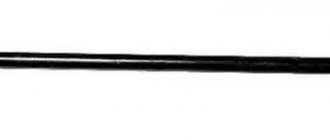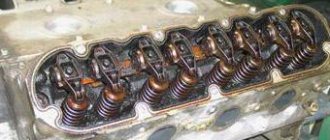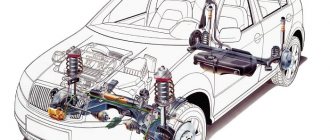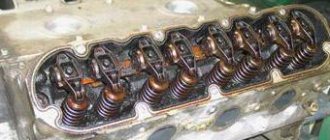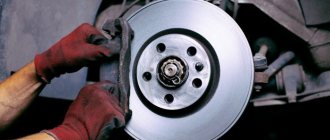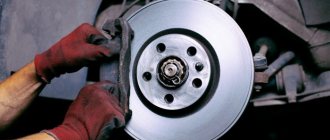A faulty steering mechanism on your vehicle can cause a serious accident. Complete blocking of the wheel control system rarely occurs suddenly, which is why it is so important to be able to promptly determine the need to repair one of the most critical components of the car. Next, we will consider the main signs of a steering rack failure, which, if correctly installed at an early stage of development, will allow you to avoid an accident and restore the performance of the part with minimal financial costs.
If the steering rack is knocking, is it okay to drive?
Of course, your car will drive a certain number of kilometers with a knock, but it’s not worth taking risks and continuing to drive with it. In the worst case, the steering mechanism may simply jam. If this happens at high speed, the consequences will be dire.
Protect yourself and other road users. If knocking or humming occurs in the structure, be sure to carry out diagnostics or contact a service station. On some cars, due to the nature of the suspension, a slight knock in the rack may be quite normal. You can get detailed information about the problem for your make and model of car on thematic forums on the Internet.
Prevention measures
You can avoid knocking in the steering rack by performing several measures, among which it is worth noting:
- Reducing sudden braking and starting to zero (unless circumstances require it). Aggressive driving style greatly affects the wear of rack components.
- Do not use curbs as barriers when parking. As previously mentioned, the steering rack is extremely susceptible to shock loads.
- Drive over speed bumps, potholes, potholes and other irregularities at minimum speed. When driving at high speed over such obstacles, the steering rack will experience enormous loads.
- Carry out regular inspection of oil seals, boots and other structural components. By detecting their destruction in time, you will prevent accelerated wear of parts.
- As soon as any signs of malfunction appear, perform diagnostics.
- Do not hold the wheels at the maximum turning angle for more than 5 seconds, as this will negatively affect the gearbox.
All this will help eliminate the appearance of extraneous noise in the rack, and will also extend its service life.
Repair procedure
Having purchased the necessary repair kit, you can begin dismantling. Here it is necessary to follow a certain algorithm consisting of the following steps:
- Completely dismantle the steering rack.
- Remove the tie rods.
- Clean the structure from dirt accumulated during operation.
- Replace worn parts.
- Inspect the shaft and install a new one if necessary.
Why remove the tie rods? This will greatly simplify the process of installing new boots. By pulling them onto the corresponding protrusions on the rod, you can achieve maximum tightness. Before assembling the rack, be sure to lubricate the internal oil seal.
If your car has a hydraulic booster, then you will first need to disconnect the high pressure pipes and then drain the working fluid into a prepared container. It is not recommended to remove the gearbox with hydraulic power steering yourself. The procedure involves dismantling the subframe, and it is impossible to do it alone.
The described technique will eliminate knocking in the steering rack. To complete the procedure, you will need a set of keys and screwdrivers, a garage with a pit. You can also always contact a car service center, where all the above operations will be performed by auto mechanics. But be careful, as they may jack up the cost of repairs or supply low-quality consumables.
What to do?
You can change the unit completely, that is, buy a new one. However, the cost is often just off the charts, buying an analogue is not always profitable, it may turn out to be of Chinese quality - and this is just a waste of money. After a year, the rack will leak or knock again.
You can try to repair it. This is a real solution, if you turn to a normal repairman, then after repair it can last for many thousands of kilometers, you can read this useful material .
In any case, if the rack rattles, it needs to be either replaced or repaired. Indeed, in very advanced cases it may simply jam, which is not safe.
Now let's watch a useful video.
I’ll finish this, read our AUTOBLOG
Similar news
- Power steering (hydraulic power steering) or EUR (electric power steering). What's better …
- Front or rear wheel drive. Which is better and more reliable, the main differences…
- Types (types) of steering racks. How they work, review article
Add a comment Cancel reply
Diagnostics
First you need to make sure there is a problem. To do this, you need to turn off the engine, having first placed the car on the inspection hole. Then you need to turn the steering wheel several times until it stops in one direction and the other.
At the same time, at least two people are needed to determine the malfunction. One will turn the steering wheel, the other will evaluate the work of the rack from below. This will allow you to check for any gaps in the hinges. If the knocking noise remains even after disconnecting the rods and levers, the unit will have to be replaced.
There can be many reasons why the steering rack knocks. Therefore, diagnostics plays a huge role in repairs. The most common knocking noises are the tie rod ends and rods. The main sign of a torn tip is a damaged boot. It is because of this that the ball joint becomes unusable. Diagnosing a broken rod is much more difficult.
This is interesting: Checking the ignition coil with a tester: determining the operating condition
Unfortunately, it is difficult to verify that the steering rack is knocking precisely because of traction, because if the car was purchased with mileage, then the previous owner could easily replace the torn spare part without bothering with more serious repairs.
Important! To understand that the steering rack is knocking precisely because of the traction, you need to remove the boot and check the traction for any play.
In most cases, the reason why the steering rack knocks is the bushing. This is part number 7 in the picture. It does not have a rigid fixation and is pushed forward by a spring, which is adjusted by a bolt with a lock nut.
Important! Most service centers, instead of replacing only the bushing, offer to install a new unit.
Most often, such a policy of service centers is associated with a banal desire to make money from the motorist. Indeed, there are parts that change only during assembly. But this is not the case. The bushing for Honda cars is available for public sale. Moreover, you can do it yourself if you have the drawings.
Noise when turning
If you hear a hum when the steering wheel is turned to its extreme (or close to it) position, it means that you need to check the condition of the hydraulic or electric booster and the components of its working system. In this case, a hum may occur even if the fluid level is normal. You need to check the condition of the pump blades (often, over time, the pump’s performance decreases), the condition of its bearings, and the tension of the drive belt.
Power steering fluid leak
Regular leakage is a reason to check the power steering system and its seals. In particular, if the car owner is forced to frequently add fluid to the system’s expansion tank. In this case, a concomitant symptom of a faulty steering rack will be a fluid leak from the line. It can drain directly onto the ground under the car (usually right under the expansion tank) or streaks can be seen on the steering linkage boots.
Often, when a liquid leaks, air enters the system (the system is “aired”). It can be seen by the bubbling liquid in the expansion tank. As stated above, the cause of the leak may be rust on the rack. To get rid of it in the future, it is advisable to use non-standard plastic clamps to tighten the anthers, and their metal counterparts, which provide a higher level of tightness.
Knock when driving in the front axle
In fact, such a knock may also indicate a malfunction in the vehicle’s chassis, so additional diagnostics must be performed. The knock can be either in the center or on the left or right side. In the best case, a knock may indicate a torn traction boot; in the worst case, it can indicate problems with the rods, levers or other elements.
To understand exactly why such a malfunction occurred, it is better to remove and disassemble the rack. After all, the most harmless thing may be a loose adjusting nut or wear of the bushing (when there is a knock on the right), but a more serious problem is wear of the worm pair.
Torn boot on traction
When checking the performance of the rack, it is necessary to pay attention to the integrity of the traction boot. Ideally, it should be intact and the rubber should be elastic. If it is torn and dirt has gotten inside, it must be replaced, lubricant must be added after removing dirt, moisture, and debris from the mechanisms.
Electric power steering rack
To localize faults in the electric steering rack, it is necessary to check the following elements.
Device
To check the mechanism for malfunction, you need to know how it works; the unit consists of:
- Aluminum housing.
- Gears rotated by the steering wheel, transmitting force to the rack (we do not confuse the worm in the worm mechanism).
- A rack with a toothed section that transmits force from the gear to the wheel rods.
- Amplitude limiters on both sides, consisting of a bushing and a power cuff.
- Seals, support bushings and other small items included in the repair kit.
Checking the steering rack
Knocking in a car can occur for several reasons. Many motorists ask how to determine a knock in the steering rack. You can do this in the following ways:
- Visually and audibly. You may hear superficial and internal knocking. The first occurs due to a ruptured boot. In this case, the tip is not protected in any way, so it quickly fails. An internal knock indicates a more serious breakdown, which is best diagnosed at a car service center.
- Check if there are any gaps in the steering rod joints.
- Disconnect the cross rods. If the knocking noise remains, then the problem is in the steering rack.
It is recommended to put the car on a lift or pit, and then ask someone to turn the steering wheel. Being directly under the car, you are more likely to be able to determine the source of the sound.
When purchasing a used car, diagnostics can become more complicated. The damage will be difficult to determine, since the previous owner may have completely replaced the boots with new ones, leaving the underlying problem without a solution. In such situations, it is better to completely dismantle the entire structure.
Causes of knocking
Despite its reliability, the rack design has several disadvantages. These include sensitivity to shock loads, difficulty in installation and a tendency to constant vibration. Under the influence of external loads, any component, of course, becomes unusable, which is why a characteristic knock appears.
The main reasons for this phenomenon include:
- The plastic bushing installed on the right or left side of the rack is severely worn. There is a strong backlash in the design, due to which drivers hear extraneous noise. This is especially noticeable when driving on a bad road.
- Poor tightening of connections in the steering mechanism design. It can be fixed quite simply (you need to tighten all the fasteners well).
- The appearance of corrosion, which destroys the metal and contributes to the formation of backlash.
- Damage to anthers. Dust, sand and dirt get into the structure, increasing wear of the part.
- Deformation of the crankcase, resulting in an incorrect angle between the screw and the teeth.
- Development of the resource of the central tooth.
A common problem is leakage in cars with power steering (power steering). The power steering design uses a special pump, which creates additional force when turning the steering wheel, making the process easier for the driver. When the seals fail, the pressure in the system drops, the working fluid leaks out, and accordingly, the steering wheel rotates with difficulty. As a result, this will lead to accelerated wear and knocking.
Prolonged downtime can cause the shaft to rust and difficulty turning the steering wheel, accompanied by knocking. If a hum also appears along with the knocking, this indicates a breakdown of the power steering pump. It does not build up the required pressure. The way out of the situation is to replace this component.
Most slats are made of soft metal that will wrinkle over time, so this part should be inspected regularly. Now you know why the steering rack is knocking, which means you can fix the problem.
